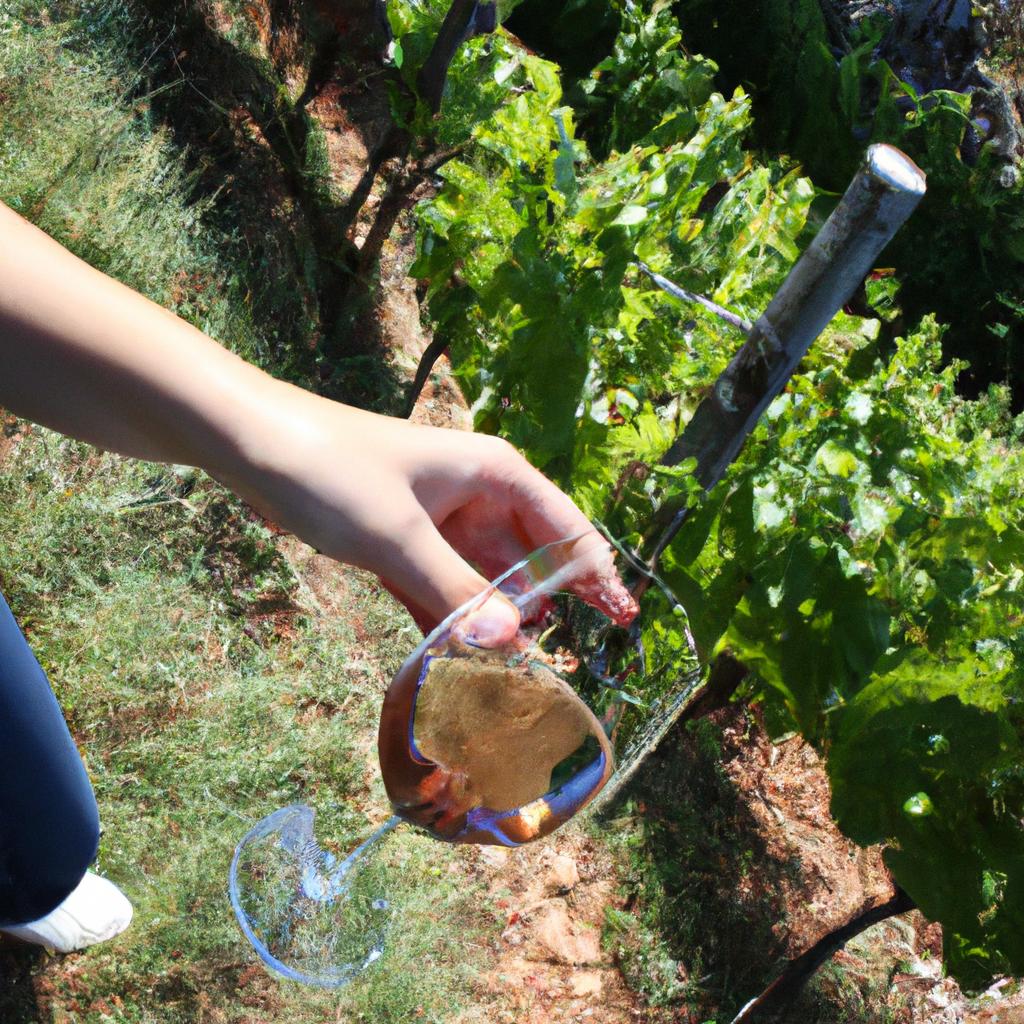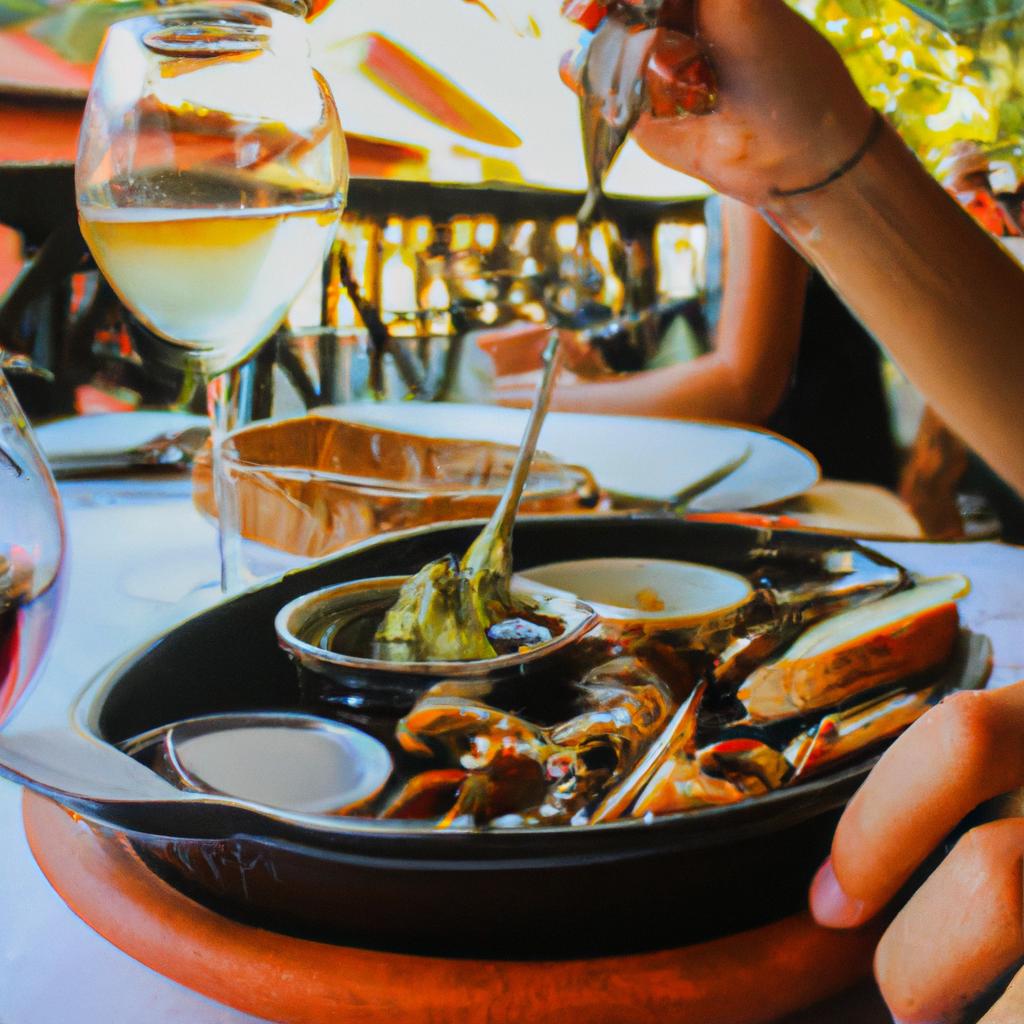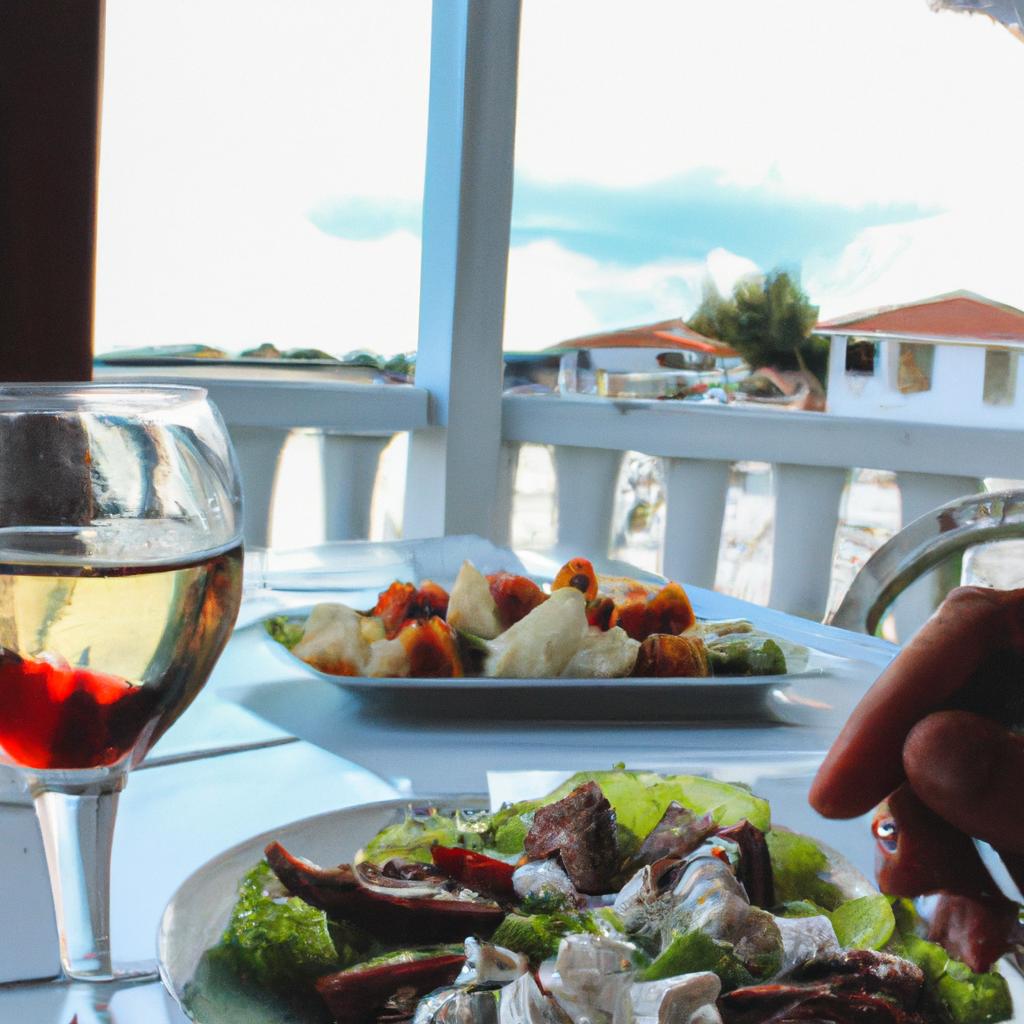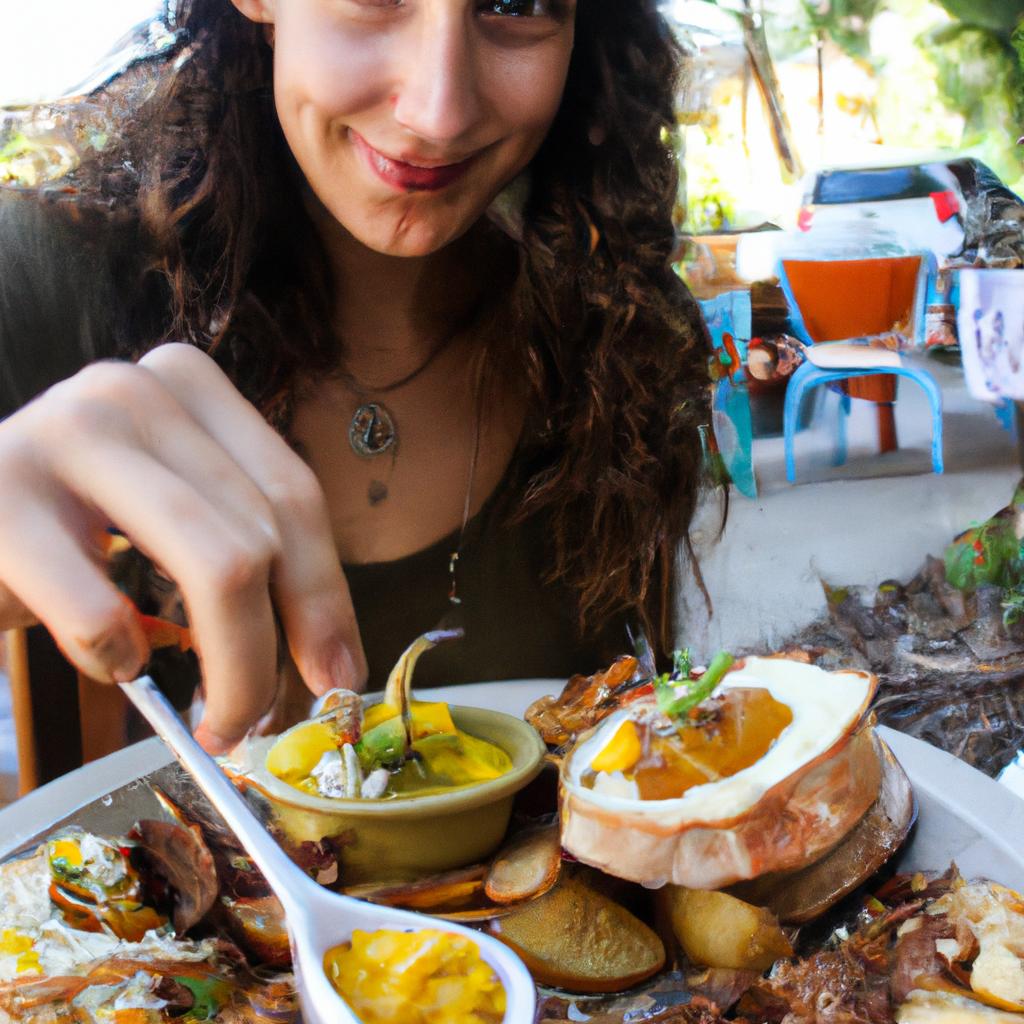Gastronomic Tours: Uncovering Culinary Delights on Food and Wine Journeys

Gastronomic tours, also known as food and wine journeys, have become increasingly popular among travelers seeking to explore the culinary delights of different regions. These immersive experiences offer a unique opportunity to uncover the rich tapestry of flavors, techniques, and traditions that define a particular cuisine. For instance, imagine embarking on a gastronomic tour through the picturesque vineyards of Tuscany, Italy. As you traverse the scenic landscapes dotted with olive groves and sunflower fields, you are exposed to an array of traditional dishes such as handmade pasta tossed in flavorful sauces or succulent meats slow-cooked to perfection. This article aims to delve into the world of gastronomic tours, highlighting their significance in showcasing local cuisines and fostering cultural exchange.
In recent years, there has been a noticeable shift in travel preferences towards experiential tourism. Travelers now seek more than just sightseeing; they yearn for authentic encounters that allow them to engage with local cultures at a deeper level. Gastronomic tours perfectly align with this desire by immersing participants in the heart of regional culinary traditions. By exploring local markets, participating in cooking classes led by skilled chefs, and indulging in carefully curated tastings, these tours provide an avenue for travelers to gain firsthand knowledge about the local ingredients, cooking techniques, and cultural significance of food in a particular destination.
One of the key benefits of gastronomic tours is the opportunity to taste and savor a wide variety of dishes that may not be easily accessible or known outside of the region. Travelers can discover hidden gems, such as family-run trattorias tucked away in narrow alleyways or countryside wineries producing limited quantities of exceptional wines. These culinary experiences often go beyond just eating; they offer a chance to understand the story behind each dish and its connection to the local community.
Moreover, gastronomic tours foster cultural exchange by bringing travelers together with locals who are passionate about their cuisine. Whether it’s an enthusiastic chef sharing their grandmother’s secret recipe or a farmer explaining the traditional methods used to cultivate crops, these interactions create meaningful connections and bridges between different cultures. Through shared meals and conversations, travelers gain insights into the values, traditions, and customs that shape a region’s culinary identity.
Gastronomic tours also contribute to sustainable tourism practices by supporting local businesses and promoting responsible consumption. By prioritizing locally sourced ingredients and visiting small-scale producers, participants contribute directly to the preservation of traditional food production methods and help sustain local economies. Additionally, some tour operators collaborate with organizations that focus on reducing food waste or promoting ethical farming practices, further enhancing the positive impact of these journeys.
In conclusion, gastronomic tours offer an enriching travel experience that goes beyond simply satisfying hunger. They provide an avenue for travelers to immerse themselves in the flavors, aromas, and stories behind regional cuisines while fostering cultural exchange and supporting sustainable practices. Whether you’re a seasoned foodie or simply curious about exploring new tastes, embarking on a gastronomic tour promises unforgettable moments filled with delicious discoveries.
Exploring Authentic Local Cuisine
Imagine yourself strolling through the vibrant streets of a bustling city, tantalizing aromas wafting from every corner. Your taste buds tingle with anticipation as you embark on a gastronomic adventure, eager to uncover the secrets behind authentic local cuisine. Gastronomic tours offer an immersive experience that goes beyond mere sightseeing, allowing travelers to delve deep into the heart and soul of a destination through its culinary delights.
One example of such an exploration is found in the charming town of Bologna, Italy. Renowned for its rich culinary heritage, Bologna offers a treasure trove of traditional dishes that have been passed down through generations. From the iconic tagliatelle al ragù to mouthwatering mortadella sandwiches, each bite tells a story steeped in history and tradition. By joining a gastronomic tour in Bologna, travelers can not only savor these delectable specialties but also gain insights into the techniques and ingredients used by local chefs.
Embarking on a food and wine journey unlocks a world of flavors and experiences that are often hidden beneath the surface. It provides an opportunity to connect with locals who proudly share their culinary traditions while imparting knowledge about regional produce and cooking methods. The emotional response evoked by this encounter is undeniable – it fosters a sense of belonging and appreciation for diverse cultures. Consider the following bullet points:
- Indulge in decadent chocolates handcrafted by skilled artisans.
- Sip on velvety red wines made from grapes grown in sun-kissed vineyards.
- Sample freshly caught seafood prepared with age-old recipes.
- Delight your senses with aromatic spices that bring dishes to life.
To add further depth to our understanding, let’s explore a table showcasing different destinations known for their unique culinary offerings:
| Destination | Specialties | Noteworthy Dishes |
|---|---|---|
| Thailand | Pad Thai, Tom Yum Soup | Green Curry, Mango Sticky Rice |
| Japan | Sushi, Ramen | Tempura, Yakitori |
| Mexico | Tacos al Pastor, Guacamole | Mole Poblano, Chiles en Nogada |
| Greece | Moussaka, Souvlaki | Feta Cheese, Baklava |
As we conclude this section and transition into the subsequent one about discovering hidden culinary gems, it is clear that gastronomic tours offer a unique opportunity to explore the world through its flavors. By immersing oneself in local cuisine and engaging with passionate food enthusiasts along the way, travelers gain a deeper understanding of cultural heritage and forge lasting memories. Let’s now delve into the exciting adventures that await those who dare to uncover these hidden treasures.
Discovering Hidden Culinary Gems
Unveiling Hidden Culinary Gems
Embarking on a gastronomic tour is not merely about indulging in delectable dishes; it also entails uncovering hidden culinary gems that offer unique and authentic experiences. One such example is the small coastal town of San Sebastian, located in the Basque Country of Spain. This picturesque destination boasts an impressive array of Michelin-starred restaurants and pintxos bars, where visitors can savor traditional Basque cuisine with modern twists.
When exploring these hidden culinary gems, one will encounter a rich tapestry of flavors, textures, and aromas that tell stories deeply rooted in local culture and tradition. To fully immerse oneself in this culinary journey, here are some key elements to consider:
-
Local Ingredients: The use of locally sourced ingredients is at the heart of authentic regional cuisine. From fresh seafood caught from nearby waters to seasonal produce grown in fertile lands, each bite transports diners to the very essence of the area’s gastronomy.
-
Traditional Techniques: These hidden culinary gems often preserve time-honored techniques passed down through generations. Whether it’s hand-rolling pasta or slow-cooking stews over open fires, these age-old methods infuse dishes with a sense of history and authenticity.
-
Cultural Significance: Beyond satisfying taste buds, these culinary treasures hold significant cultural value within their communities. They serve as gathering places for locals to celebrate traditions and share stories while preserving their heritage through food.
-
Artistry and Presentation: Culinary creations found in these hidden gems go beyond mere sustenance—they are works of art meticulously crafted by skilled chefs who pay attention not only to taste but also to visual appeal. Each dish becomes a masterpiece plated with precision and care.
To further illustrate the importance of discovering hidden culinary gems, let us explore a hypothetical case study showcasing three noteworthy establishments in San Sebastian:
| Restaurant | Cuisine | Highlights |
|---|---|---|
| Arzak | Modern Basque | Innovative dishes blending tradition and innovation. |
| La Cuchara de San Telmo | Pintxos Bar | Traditional pintxos bursting with local flavors, served in a vibrant atmosphere. |
| Asador Etxebarri | Grill | Unmatched grilled delicacies using locally sourced ingredients cooked over an open fire. |
By venturing beyond well-known culinary destinations, travelers can uncover hidden gems like these that offer unforgettable experiences and authentic encounters with regional cuisine.
Transitioning smoothly to the subsequent section on “Indulging in Exquisite Wine Tastings,” one cannot overlook the perfect pairings that await those eager to explore not only the world of food but also the realms of wine and spirits.
Indulging in Exquisite Wine Tastings
Building upon the exploration of hidden culinary gems, gastronomic tours also offer participants an opportunity to delve into the rich traditions and techniques behind regional cuisines. By immersing themselves in hands-on experiences and interactions with local chefs, travelers can gain a deeper appreciation for the cultural significance of food. For instance, let us consider a hypothetical case study involving a group of tourists visiting Italy’s Amalfi Coast.
One of the highlights of their journey is attending a cooking class at a family-run trattoria nestled amidst lemon groves overlooking the Mediterranean Sea. Under the guidance of skilled Italian chefs, these eager learners are introduced to traditional recipes passed down through generations. They learn about the importance of using locally sourced ingredients such as ripe tomatoes from nearby farms and fragrant basil grown in herb gardens. Through this immersive experience, they not only acquire practical skills but also develop an understanding of how each ingredient contributes to the overall flavor profile.
To evoke a sense of excitement and anticipation among travelers embarking on gastronomic tours, here are some key elements that make these experiences truly special:
- Interactive Workshops: Participants get their hands dirty by actively participating in cooking workshops where they chop, stir, and knead alongside experienced chefs.
- Authentic Local Ingredients: The use of locally sourced ingredients adds authenticity and showcases the unique flavors and textures associated with specific regions.
- Cultural Exchange: Engaging with local chefs allows for valuable cultural exchanges where visitors gain insights into customs, beliefs, and stories connected to traditional dishes.
- Culinary Traditions: Discovering age-old techniques reveals how various cultures have evolved their own distinctive styles of cooking over time.
Moreover, it is worth noting that during these journeys dedicated to uncovering culinary delights, participants often come across fascinating trivia pertaining to traditional cooking methods. To illustrate this further, we present below a table showcasing three intriguing traditional techniques discovered by our hypothetical group along their gastronomic tour:
| Traditional Cooking Techniques | Region of Origin |
|---|---|
| Tandoor Cooking | India |
| Sous Vide | France |
| Peking Duck | China |
In summary, gastronomic tours offer more than just a taste of local delicacies; they provide an opportunity to explore the cultural and historical significance behind regional cuisines. By engaging in hands-on experiences and interacting with local chefs, travelers gain insights into traditional cooking techniques that have been passed down through generations.
Unveiling Traditional Cooking Techniques
Building upon the delightful wine tastings, our gastronomic tours take you on a journey to uncover traditional cooking techniques that have been passed down through generations. Experience the joy of immersing yourself in the rich culinary history and cultural practices as we explore various regions known for their unique flavors and gastronomic traditions.
Paragraph 1:
Imagine stepping into an idyllic countryside estate nestled amidst rolling vineyards. In this picturesque setting, you are welcomed by local chefs who share their expertise in preparing time-honored recipes using age-old cooking methods. One such example is found in Tuscany, Italy, where visitors can witness the art of making homemade pasta from scratch. From kneading the dough with precision to shaping it into delicate strands that gracefully twirl around your fork, every step reflects a deep appreciation for tradition and quality ingredients.
- Delight in the sight of vibrant farmers’ markets bursting with fresh produce
- Savor slow-cooked dishes infused with aromatic herbs and spices
- Witness skilled artisans crafting handmade cheeses and charcuterie items
- Participate in interactive workshops that teach secrets behind regional delicacies
| Region | Traditional Dish | Cooking Technique |
|---|---|---|
| Provence | Bouillabaisse | Slow simmering |
| Mexico | Mole Poblano | Grinding dried chilies and seeds |
| Thailand | Pad Thai | Wok frying |
| Morocco | Tagine | Clay pot stewing |
These immersive experiences not only offer insights into authentic cuisine but also evoke a sense of wonder and reverence for centuries-old customs. As you engage with passionate locals, be prepared to forge connections over shared meals that transcend language barriers—bringing people together through the universal language of food.
Now let us delve deeper into the historical significance of these culinary treasures as we embark on a journey of immersing ourselves in rich food and wine history.
Immersing in Rich Food and Wine History
In our quest to uncover culinary delights on gastronomic tours, it is essential to explore the traditional cooking techniques that have been passed down through generations. These techniques not only showcase the rich cultural heritage of a region but also play a crucial role in creating unique and authentic flavors. To illustrate this point, let us delve into the captivating world of Italian cuisine.
Italian cuisine is renowned for its diverse regional specialties, each with its own set of traditional cooking techniques. Take, for example, the art of making fresh pasta. In Emilia-Romagna, home to cities like Bologna and Parma, locals pride themselves on their ability to create perfectly rolled dough and delicate shapes like tortellini and tagliatelle by hand. This meticulous process demands precision and patience as they strive for perfection in every bite.
When embarking on a gastronomic tour centered around traditional cooking techniques, one can expect to witness a multitude of fascinating practices. Here are some key aspects that make these experiences truly exceptional:
- Preservation of Culinary Heritage: Traditional cooking techniques serve as custodians of a region’s culinary history, preserving recipes and methods that might otherwise be lost over time.
- Hands-on Learning Opportunities: Participants get the chance to actively engage in cooking classes or workshops where expert chefs share their knowledge while guiding them through the intricate steps involved.
- Authentic Taste Sensations: By utilizing age-old techniques, dishes prepared during these tours offer an unparalleled depth of flavor that highlights the essence of local ingredients.
- Cultural Immersion: Exploring traditional cooking methods provides insights into the customs and traditions deeply rooted within a community’s food culture.
To underscore the significance of traditional cooking techniques further, consider Table 1 below, which compares two approaches – modern versus traditional – in preparing risotto:
Table 1: Comparison between Modern and Traditional Risotto Preparation
| Aspect | Modern Approach | Traditional Approach |
|---|---|---|
| Cooking Method | High heat, quick process | Low heat, slow and gradual cooking |
| Rice Texture | Al dente | Creamy yet distinct texture |
| Flavor Development | Often relies on stock and seasoning | Builds flavor through the gradual addition of broth |
| Time Investment | Quick preparation | Requires patience and time to achieve perfection |
By embracing traditional techniques in risotto preparation, one can savor a dish that boasts a velvety consistency, each grain lovingly coated with layers of flavors developed over time.
In conclusion, gastronomic tours provide us with an opportunity to uncover the secrets behind traditional cooking techniques. As we explore regions like Italy and delve into their culinary heritage, we are transported back in time, immersing ourselves in age-old practices that continue to define local cuisine. From handmade pasta to slow-cooked stews, these traditions add depth and authenticity to our gastronomic adventures.
Moving forward from exploring traditional cooking techniques, let us now journey into another captivating aspect of gastronomic tours – savoring unique flavors and pairings.
Savoring Unique Flavors and Pairings
Building upon the immersive experience of delving into rich food and wine history, gastronomic tours offer a unique opportunity to savor a myriad of flavors and indulge in tantalizing pairings. This section explores how these culinary journeys allow travelers to discover distinctive tastes through encounters with local ingredients, culinary traditions, and expertly crafted dishes.
Paragraph 1: One example that showcases the essence of savoring unique flavors on gastronomic tours is the truffle hunting experience in Tuscany, Italy. As participants embark on this adventure, they are guided by skilled truffle hunters and their trained dogs through picturesque landscapes adorned with oak trees. The anticipation builds as one witnesses the remarkable bond between man and dog unravel before their eyes. Finally, when a truffle is unearthed from beneath the earth’s surface, its intoxicating aroma fills the air – both captivating and mysterious. Such encounters with rare delicacies like truffles provide an unparalleled sensory journey for food enthusiasts seeking new taste experiences.
Paragraph 2:
To further stimulate your palate during these extraordinary journeys, let us delve into some key elements that make gastronomic tours truly exceptional:
- Cultural immersion: Gastronomic tours often involve visits to local markets or artisanal producers where travelers can witness firsthand the passion and craftsmanship behind regional specialties.
- Culinary demonstrations: Engaging cooking classes led by renowned chefs introduce participants to traditional techniques and innovative approaches. These interactive sessions foster a deeper understanding of diverse cuisines while empowering individuals to recreate authentic dishes at home.
- Wine tastings: Paired perfectly with delectable meals are wine tastings conducted by knowledgeable sommeliers who share insights about each vintage’s characteristics, origin, and ideal food pairing.
- Farm-to-table experiences: Embracing sustainability and conscious consumption practices, many gastronomic tours emphasize farm-to-table dining experiences. By sourcing ingredients directly from local farms or vineyards, these excursions celebrate freshness while supporting small-scale, eco-friendly producers.
Paragraph 3:
Indulging in the diverse flavors and pairings encountered during gastronomic tours not only satisfies one’s culinary desires but also fosters a connection to the places visited. The table below showcases how different destinations offer unique gustatory experiences that leave a lasting impression on travelers:
| Destination | Signature Dish | Wine Pairing | Noteworthy Ingredient |
|---|---|---|---|
| Barcelona, Spain | Paella | Cava | Saffron |
| Tokyo, Japan | Sushi | Sake | Wasabi |
| Buenos Aires, Argentina | Asado | Malbec | Chimichurri |
These examples demonstrate the exquisite interplay between local specialties and accompanying wines, which highlight the distinctiveness of each region. By engaging with these vibrant food cultures and uncovering their hidden gems through gastronomic tours, travelers can create unforgettable memories while expanding their culinary horizons.
- Aromas that transport you to distant lands
- Tastes that awaken childhood nostalgia
- Discoveries that challenge your preconceived notions
- Flavors that evoke emotions long forgotten
Through savoring unique flavors and pairings on gastronomic tours, travelers are exposed to an array of sensory encounters that transcend mere sustenance. These extraordinary journeys allow individuals to forge deeper connections with different cultures while exploring the endless possibilities offered by global cuisine.





